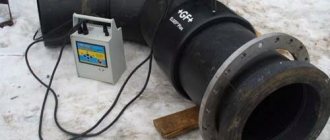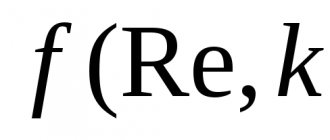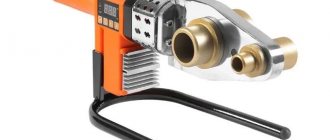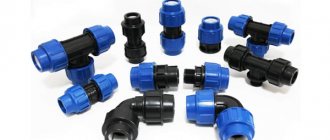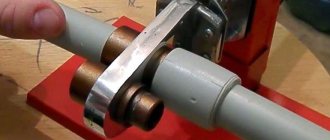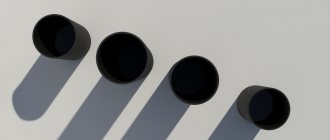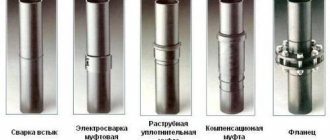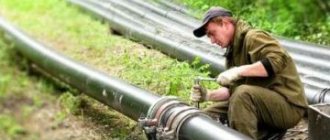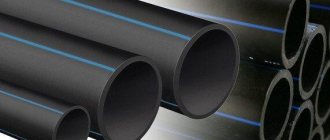Corrugated sewer pipes are now used more often than concrete or metal ones. They have the same high reliability and durability during operation. And they are much easier to install due to their low weight. Fewer workers are required to install piping systems.
Corrugated sewer pipes
Ring stiffness: basic concepts
During the research, it was found that pipes with flexible surfaces are more susceptible to loads transmitted through the soil than pipes with more rigid walls. Soil has varying degrees of compaction, which influences the choice of ring stiffness.
With greater ring rigidity, pipes will be able to withstand higher loads. This parameter is measured in kN/m2. The scope of operation of the pipes, as well as the installation conditions of the products, depends on it.
SN8, SN10, SN16, SN24. What it is?
Ring stiffness is the ability of a pipe to maintain a round shape despite soil pressure and load on the ground surface (for example, when a vehicle passes). The higher the ring stiffness class of the pipe (SN), the higher the load-bearing capacity of the pipe.
In addition to rigidity, the standard imposes another mandatory requirement on polymer pipes: flexibility. The pipe must not only be rigid in accordance with its class, but also deform without destruction by at least 30%. After 30% deformation, the pipe should return from the elliptical state to its original state (take the shape of a circle).
Photo: testing a pipe for ring stiffness and flexibility in the manufacturer’s laboratory.
Hardness classes SN
Each polymer pipe has its own stiffness class, which determines the maximum permissible load on the surface of the product; the value of this parameter is usually calculated in steps to the power of two. If we talk about specific designations, then the stiffness class of polymer pipes, designated SN, will be equal to 2, 4, 8 and so on.
- SN 2: pipes with this stiffness class are usually located underground at a depth of 1 m, but in conditions of high traffic load such products are not installed.
- SN 4: such pipes are placed to a depth of 1 m, but installation is carried out only in places where passenger traffic will pass.
- SN 8: also laid to a depth of 1 m, but they can already be laid in places where there will be load on the ground from trucks.
But when determining the installation depth, it is worth considering, in addition to the load, the degree of compaction of the earth.
Installation
The pipes are connected into a single pipeline system in one of three ways:
- using couplings;
- welding;
- into the bell
In any case, the basic installation rules must be followed:
- installation should be carried out by specialists;
- joints must be cleaned of contamination;
- The connection points can only be lubricated with silicone grease, oil must not be used;
- it is necessary to use fittings and other components from the same company;
- operational requirements, such as: operating temperature threshold, etc. must be strictly observed.
How is soil type related to hardness class?
In addition to the hardness class, the type of soil should also be taken into account when choosing. The lower the tensile strength and the higher the load on the ground, the greater the requirements for the rigidity parameter will be.
| Laying conditions | Pipe backfill material | Recommended minimum pipe stiffness (kN/m) | |||||
| Pipe laying depth < 3m | 3 - 6 m | ||||||
| Dense soil with good clutch | Pumps and seals clay | Ripping. clay | Dense soil with good clutch | Pumps and seals clay | Ripping. clay | ||
| Natural soil (no load from ground transport) | Local soil | 2 | — | — | 4 | — | — |
| 2 | 4 | 8 | 4 | 8 | 16 | ||
| Sand, gravel < 22m | 2 | 4 | 8 | 4 | 4 | 8 | |
| Pebbles, crushed stone 4 - 22 mm | 2 | — | — | 4 | — | — | |
| Secondary! streets with low traffic volume | Local soil | 4 | 4 | 8 | 4 | 8 | 16 |
| Sand, gravel < 22m | 4 | 4 | 4 | 4 | 4 | 8 | |
| Pebbles, crushed stone 4 - 22 mm | 4 | — | — | 4 | — | — | |
| Main streets with heavy traffic | Local soil | 8 | — | — | 8 | — | |
| Sand, gravel < 22m | 8 | 8 | 8 | 8 | 8 | 8 | |
| Pebbles, crushed stone 4 - 22 mm | 8 | — | — | 8 | — | — | |
Stiffness of pipes made of different materials
PVC pipes
| Nominal pipe diameter | SN 2 | SN 4 | SN 8 | |||
| Wall thickness mm. | Weight 1p/m (kg) | Wall thickness mm. | Weight 1p/m (kg) | Wall thickness mm. | Weight 1p/m (kg) | |
| 110 | 2.7 | 1.46 | 3.4 | 1.81 | 3.2 | 1.74 |
| 160 | 3.2 | 2.56 | 4.0 | 3.14 | 4.9 | 3.69 |
| 200 | 3.9 | 3.87 | 4.9 | 4.84 | 5.9 | 5.77 |
| 225 | — | — | 5.5 | 6.02 | 6.9 | 7.44 |
| 250 | 4.9 | 6.08 | 6.2 | 7.69 | 7.3 | 8.98 |
| 315 | 6.2 | 9.75 | 7.7 | 12.0 | 9.7 | 14.3 |
| 400 | 7.8 | 15.8 | 9.8 | 19.5 | 11.7 | 23.2 |
| 500 | 9.8 | 24.7 | 12.3 | 30.9 | 14.6 | 36.2 |
| 630 | — | — | 15.4 | 48.7 | 18.4 | 58.2 |
Corrugated, double-layer PP pipes
| PP pipes for external sewerage | Size L, mm | de, mm external | DN, mm internal | Weight 1 kg/m SN4, SN 8 |
| 110×6000 | 110 | 93 | 0.6 | |
| 160×6000 | 137 | 160 | 1.3 | |
| 200×6000 | 227 | 200 | 2.3; 2,7 | |
| 250x6000 | 282 | 250 | 3,5 | |
| 300x6000 | 340 | 300 | 4,4; 5,1 | |
| 400x6000 | 453 | 400 | 7,2; 9,0 | |
| 500x5900 | 567 | 500 | 10,95; 14,5 | |
| 600x5900 | 680 | 600 | 15,8; 20,5 | |
| 800x5850 | 906 | 800 | 26,04; 32,5 | |
| 1000x5850 | 1135 | 1000 | 40,6 |
HDPE pipes
| Technical pipe type | Value, kN/m2 |
| Type "L" (SDR33) | |
| Type "SL" (SDR26) | 3 |
| Type "OS" (SDR21) | 5 |
| Type "C" (SDR17.6) | 8 |
| Type “c+” (SDR17) | 8 |
| Type "ST" (SDR13.6) | 18 |
| Type "T" (SDR11) | 32 |
Corsis pipes (double-layer, profiled)
| Outer diameter mm | Inner diameter mm | Wall thickness int. layer mm | Corrugation height mm | Corrugated wall thickness according to rigidity | Corrugation pitch mm | Corrugation protrusion width mm | Estimated weight of 1m pipe (kg) | ||
| SN-6 | SN8 | SN-6 | SN8 | ||||||
| 110 | 93 | 1.1 | 8.75 | — | 0.5 | 12.6 | 8.6 | 0.9 | 1.0 |
| 139 | 1.2 | 11 | — | 0.5 | 12.6 | 8.6 | 0.9 | 1.0 | |
| 200 | 176 | 1.4 | 13 | 0.7 | 0.8 | 16.5 | 12 | 1.8 | 2.5 |
| 250 | 216 | 1.7 | 15 | 0.8 | 1 | 37 | 23 | 2.9 | 3.7 |
| 315 | 271 | 1.9 | 21 | 1 | 1.5 | 42 | 27 | 4.6 | 5.7 |
| 400 | 343 | 2.3 | 26 | 1 | 1.8 | 49 | 30 | 7.0 | 8.7 |
| 500 | 427 | 2.8 | 33 | 1.1 | 1.9 | 58 | 38 | 12.0 | 13.2 |
| 630 | 535 | 3.3 | 45 | 1.1 | 1.9 | 75 | 47 | 17.7 | 20.3 |
| 800 | 678 | 4.1 | 61 | 1.7 | 2.7 | 89 | 56 | 24.5 | 33.1 |
| 1000 | 851 | 5 | 75 | 1.8 | 2.8 | 98 | 60 | 40.5 | 51.7 |
| 1200 | 1030 | 5 | 85 | 2 | 3 | 110 | 80 | 56.0 | 66.9 |
PE pipes
| Inner diameter, mm | Maximum outer diameter, (mm) for ring-stiffened pipes | Inner diameter, mm | Maximum outer diameter, (mm) for ring-stiffened pipes | ||||
| Nominal value | Maximum deviation | SN2 | SN4 | SN6 | Nominal value | Maximum deviation | SN2 |
| 600 | -18 | 648 | 656 | 672 | 3600 | -80 | 3864 |
| 800 | 858 | 874 | 896 | 3800 | 4080 | ||
| 1000 | -60 | 1072 | 1094 | 1120 | 4000 | 4296 | |
| 1200 | 1288 | 1314 | 1344 | 4200 | -100 | 4512 | |
| 1400 | 1504 | 1532 | 1568 | 4400 | 4728 | ||
| 1600 | 1718 | 1752 | 1792 | 4600 | 4944 | ||
| 1800 | 1934 | 1970 | 2016 | 4800 | 5160 | ||
| 2000 | 2150 | 2190 | 2240 | 5000 | 5376 | ||
| 2400 | 2576 | 2628 | 2688 | 5200 | -120 | 5592 | |
| 2550 | 2742 | 2794 | 2862 | 5400 | 5806 | ||
| 3000 | 3222 | 3286 | 3364 | 5600 | 6022 | ||
| 3200 | -80 | 3436 | 5800 | 6234 | |||
| 3400 | 3650 | 6000 | 6450 | ||||
Questions and answers
The pipes we offer are produced by the Moscow plant FD Plast.
Download the certificate. For the production of FDplast corrugated pipes with stiffness sn8, virgin low-density polyethylene (HDPE) is used.
Indicators SN6 and SN8 are classes of ring stiffness of pipes of 6 kN/m2 and 8 kN/m2, respectively, showing the ability of the walls to withstand a certain load, or rather the maximum load per unit surface area of the pipe when its vertical diameter is deformed without taking into account the lateral support. Pipes with stiffness class SN6 can withstand passenger cars. These pipes can be laid to a depth of up to 6 m. Pipes with stiffness class SN8 can withstand trucks/construction equipment, etc. These pipes can be laid to a depth of up to 8 m.
Standard pipes are supplied in 6 meter lengths with a socket without an O-ring.
Yes, you can purchase pieces of FDplast pipes of certain diameters from us. Minimum length of the section - 1 m (for pipe SN6), 3 m (for pipe SN8) Diameters of pipes that can be divided into sections: 110/94 mm 133/110 mm 160/136 mm 190/160 mm 200/171 mm 230/200 mm 250/216 mm 290/250 mm 315/271 mm 340/300 mm 400/343 mm 460/400 mm 500/427 mm 575/500 mm 630/535 mm 695/600 mm 923/800 mm 1000/851 mm
The socket is not included in the length of the pipe. Standard pipe 6 meters long + socket 15-20 cm depending on the diameter of the pipe.
The length of the socket is 15-20 cm depending on the diameter of the pipe. The internal diameter of the socket is slightly larger than the external diameter of the pipe itself. (For example, a 340/300 pipe has a socket length of 20 cm)
Yes, it is possible to make perforations on these pipes. The cost of perforating 1 pipe is 500 rubles.
In height: the minimum backfill height above the top of the pipe d≤600 mm is 0.7 m (70 cm), and 1 m for pipes of larger diameter. Before laying the pipe, a sand “cushion” (made of sand or fine gravel), 10-15 cm thick, is arranged. The maximum depth is 8 m. Width: the minimum distance between the trench wall and the outer wall of the pipe is 35 cm.
When laying a pipe at the entrance to a summer cottage, geotextiles can be used to separate the layers of soil during the process of backfilling the pipe. For example: when laying a pipe in sand and then filling it with crushed stone, you can separate the layers of sand and crushed stone with geotextiles to increase the bearing capacity of the soil at the entrance. When using a perforated pipe and backfilling with crushed stone, geotextiles must be used twice. It is necessary to wrap geotextile directly around the pipe to prevent silting of the holes, and you also need to place geotextile at the bottom of the trench with a margin around the edges and wrap the pipe and crushed stone in it.
All pipes have a monolithic socket and are connected without the use of additional couplings. Couplings are used to connect two corrugated ends of pipes without sockets.
O-rings are used to achieve complete sealing when connecting pipes (usually this is done when installing sewer systems). FDplast pipes are connected using the socket available on these pipes, and fit into each other quite tightly, so the use of O-rings is not necessary. O-rings are sold separately (not included with pipes).
The Moscow FDplast plant provides pipes with glued markings, which indicate the stiffness class of the pipe. (Pipes of the same diameter and different sn can be distinguished by markings and weight. Sn8 pipes are heavier than sn6 pipes.)
There are no fittings for hermetically sealing different types of pipes.
No, we only have new pipes in stock. We also do not have any defective products.
The difference is in the material from which the pipes are made: red Pragma pipes are made of polypropylene, black FDplast pipes are made of polyethylene. With the same ring stiffness (sn8), black polyethylene pipes are more profitable to buy!
Due to the strength of its molecular structure, polyethylene pipe can withstand an unlimited number of freezing and thawing cycles.
We can produce any options for bends, tees, transitions from diameter to diameter, as well as plastic inspection wells.
Source
How to choose pipe material taking into account ring stiffness correctly
When choosing products with appropriate ring stiffness, you must initially rely on the conditions of use of the sewer communication and possible loads. For example, free-flow PVC pipes with a diameter of 110-200 mm and ring stiffness SN 2 are most often installed in private sectors, but they are not suitable for industrial areas and for municipal purposes. In this case, the best option would be 2-layer polypropylene corrugated pipes with a diameter of 300 mm and SN 8 or SN 16.
The indicators of ring stiffness and polyethylene are significantly inferior to polypropylene. Due to the low rigidity parameter of PE pipes, they are not buried too deep, otherwise this will lead to deformation of the product under soil load.
Where is Korsis produced?
"POLIPLASTIC Group" is a reliable manufacturer of Korsis pipes, which have established themselves as one of the most reliable products on the plumbing market. The company produces its plastic pipes at factories in Novocheboksarsk, Klimov, Angarsk, as well as in the Republic of Kazakhstan.
By offering to choose Korsis pipes, we mean a whole line of polymer products designed for the following purposes:
- Laying sewer systems;
- Disposal of waste (rain and melt) water;
- Water drainage;
- Rehabilitation of throughput pipes in the roadbed.
Calculation of the ring stiffness of a pipe
All calculated data on ring stiffness are obtained when testing products on specialized stands. A piece of pipe is taken and the load and deformation are determined. The last parameter should correspond to a deformation of no more than 4% of the tested section of the product. Tests are carried out on three copies belonging to the same batch. After this, the arithmetic mean is determined, rounded to the minimum standard of the indicator. In simpler terms, the stiffness class determines the nominal load per unit area of the pipe at 4% cross-section deformation in the vertical dimension, excluding lateral resistance.
To determine SN, the following formula is used: SN = (E0 * I) / d3,
Where:
E0—modulus of elasticity of the product material;
I is the moment of inertia of the pipe wall;
d is the diameter measured at the center of gravity of the pipe wall, it is equal to: d = di + 2 * y,
Where
di is the internal diameter of the pipe;
y is the distance to the center of gravity of the wall.
